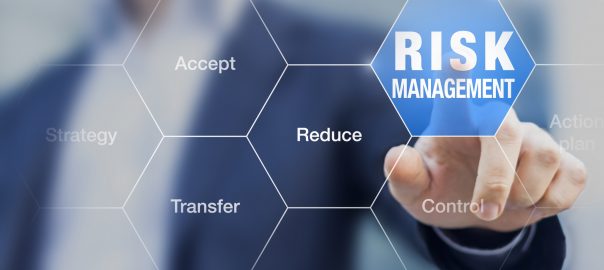In the ever-evolving landscape of modern business, risk management has emerged as a crucial element for sustaining and advancing enterprise successThe dynamism of global markets, technological advancements, and shifting regulatory environments demands a proactive and comprehensive approach to managing risksThis article delves into the essentials of risk management in modern enterprises, highlighting strategies, tools, and practices that are vital in navigating these complexities.
The Essence of Risk Management
Risk management, at its core, is about identifying, assessing, and prioritizing risks followed by the application of resources to minimize, monitor, and control the probabilities or impacts of unfortunate eventsIn today’s fast-paced and interconnected business world, the scope of risk management extends beyond mere financial risks to include operational, technological, strategic, and reputational risks.
Strategic Risk Identification and Assessment
The first step in effective risk management is the identification and assessment of potential risksThis involves a thorough analysis of internal processes and external environments to pinpoint factors that could negatively impact the businessAdvanced data analytics and forecasting tools have become instrumental in this phase, enabling businesses to predict potential risks with greater accuracy.
Implementing a Risk Management Framework
A robust risk management framework is essential for any modern enterpriseThis framework should be aligned with the company’s objectives and should encompass policies, procedures, and tools for risk assessment and mitigationIt’s crucial that this framework is flexible enough to adapt to new risks and changing business landscapes.
Leveraging Technology in Risk Management
The integration of technology in risk management is no longer a luxury but a necessityTools like risk management software, AI, and machine learning algorithms offer real-time data analysis, predictive modeling, and automated risk assessments, greatly enhancing the efficiency and effectiveness of risk management strategies.
Fostering a Risk-Aware Culture
An often overlooked aspect of risk management is the cultivation of a risk-aware culture within the organizationThis involves training employees at all levels to recognize and respond to risks appropriatelyRegular workshops, seminars, and simulations can be effective in ingraining a risk-conscious mindset among staff.
Continual Monitoring and Review
Risk management is not a one-time task but a continuous processRegular monitoring and review of risks and the effectiveness of risk management strategies are vitalThis iterative process ensures that the enterprise remains well-equipped to handle both existing and emerging risks.
Business Insurance: A Vital Component
Within the broader spectrum of risk management, business insurance plays a pivotal roleIt serves as a safety net, providing financial protection against a range of risks including property damage, liability claims, and employee-related risksCustomizable to the specific needs of a business, insurance policies can be a crucial tool in mitigating financial losses due to unforeseen eventsSelecting the right insurance coverage requires careful consideration of the business’s risk profile and should be integrated into the overall risk management strategy.
Regulatory Compliance and Risk Management
Regulatory compliance is a significant aspect of risk managementEnterprises must stay abreast of legal requirements and ensure compliance to avoid legal penalties and reputational damageCompliance risk management involves regular audits, adherence to industry standards, and proactive engagement with regulatory changes.

Financial Risk Management
Effective financial risk management is critical in safeguarding the fiscal health of an enterpriseThis includes managing credit risks, market risks, and liquidity risksUtilizing financial instruments such as futures, options, and swaps can be effective in hedging against these risks.
Global and Local Risk Considerations
In an increasingly globalized business world, enterprises must consider both global and local risksThis includes geopolitical risks, supply chain disruptions, and cultural differences in business practicesA nuanced understanding of these diverse risk factors is essential for multinational enterprises.
Crisis Management and Recovery
An integral part of risk management is preparing for crisis situationsThis involves developing crisis management plans, establishing communication protocols, and setting up recovery strategiesTraining and simulations play a crucial role in preparing the organization to handle crises effectively.
The Role of Leadership in Risk Management
Leadership plays a pivotal role in shaping the risk management culture of an enterpriseLeaders must champion risk management initiatives, ensure adequate resource allocation, and foster an environment where risk considerations are integral to decision-making processes.
Conclusion
Navigating risk management in modern enterprises requires a multifaceted and proactive approachBy effectively identifying, assessing, and mitigating risks, and integrating tools like business insurance into their strategies, businesses can not only safeguard against potential losses but also position themselves for sustainable growth and successAs the business environment continues to evolve, so must the approaches to risk management, ensuring that enterprises remain resilient and adaptable in the face of emerging challenges.
 Material Matters: Choosing the Right Chemical Gear Pump for Corrosive Fluids
Material Matters: Choosing the Right Chemical Gear Pump for Corrosive Fluids  Investing in Pink Argyle Diamonds: A Valuable Opportunity in the World of Precious Gems
Investing in Pink Argyle Diamonds: A Valuable Opportunity in the World of Precious Gems  IGI o GIA: Understanding Lab-Made Diamonds
IGI o GIA: Understanding Lab-Made Diamonds  Lab Created Diamonds Are Forever: The Future of Sustainable Luxury
Lab Created Diamonds Are Forever: The Future of Sustainable Luxury  The Key Differences Between IGI and GIA Lab Grown Diamonds
The Key Differences Between IGI and GIA Lab Grown Diamonds  Lab Created Diamonds Are Forever: The Future of Sparkle
Lab Created Diamonds Are Forever: The Future of Sparkle  Relapse, Stress, And Addction: Preventions And Treatments
Relapse, Stress, And Addction: Preventions And Treatments  The Timeless Appeal of the Lab Diamond Tennis Bracelet
The Timeless Appeal of the Lab Diamond Tennis Bracelet  Brownstone Restoration and Repair Project Cost Breakdown
Brownstone Restoration and Repair Project Cost Breakdown 

:max_bytes(150000):strip_icc()/basketball-team-supporting-their-injured-teammate-on-the-court--966143760-75350a8b15ba4936813961288be70852.jpg)
